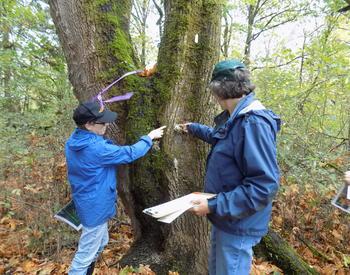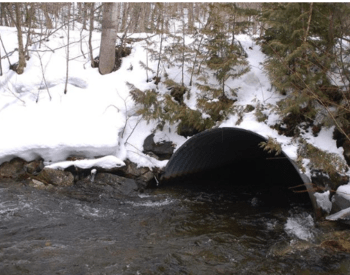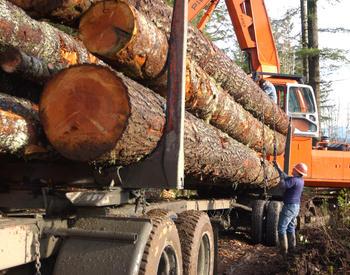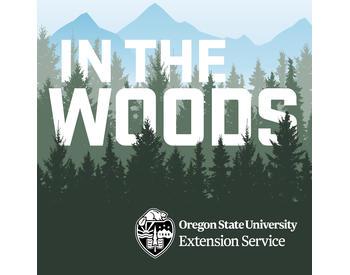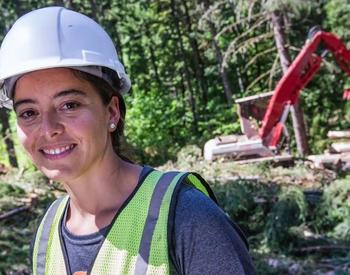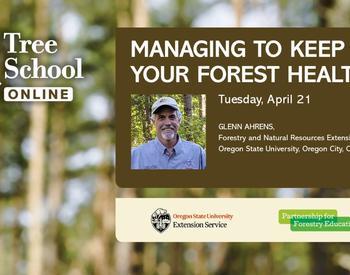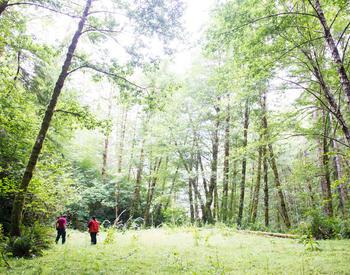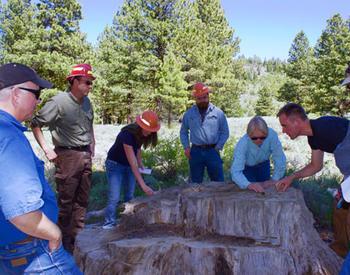Trends in climate stress, insects and disease are causing localized problems that concern landowners and foresters in the Willamette Valley. A key factor affecting forest health has been the exceptional drought in Oregon over the last 20 years, unprecedented in the historic record. There are zones of declining growth and dieback, especially in drought-sensitive trees such as western hemlock, western redcedar, red alder, and true firs around the Willamette Valley margin.
Dieback has been most common on poor soils and topography — shallow soils, rocky, too dry, too wet, south slopes, etc. And in some situations, recently established tree species are turning out to be poorly adapted. For example, Douglas-fir plantations on soils that are too wet in the winter and spring; or Douglas-fir on dry, rocky soils with lots of grass competition.
The good thing is that we can learn from this and help landowners improve success in the future by carefully assessing soil/site conditions and by planting species or genetic types likely to be better adapted. The challenge is the variability and unpredictability of future climate. But in general, there are some logical steps to take and choices to make in anticipation of recurring warm and dry conditions.
Key elements of managing for healthy trees and forests in the future include:
- Understand your site: climate, soils, topography.
- Plant or select for well-adapted species and seed sources.
- Pay attention to threats: climate extremes, insects, disease, etc.
- Prevent damage.
- Protect and enhance soil.
- Control weeds and invasive species.
- Manage lower stand density.
- Reduce fuel hazards.
- Manage for diverse forests.
Most of these are basic steps that we would always recommend. But it is more important than ever to pay attention to every step. And of course, the devil is in the details.
Weed management, spacing and thinning can help ensure that trees have adequate light, water, nutrients and growing space. But these management actions also have costs and risks involved.
Weed management involves periodic maintenance, until trees take over and shade out the understory. And if you want to keep trees well-spaced you will have a more open environment for understory vegetation including weeds. Thinning trees that have been overcrowded involves risk of weather damage, shock from sudden exposure, and damage to soil and roots during the thinning operation. After thinning, you may have increased fire risk if you can’t keep up with slash disposal.
What are well-adapted species and seed sources for the future?
We normally recommend planting trees from locally adapted parent trees, using geographic seed zones and ordering seedlings grown from seed within your local zone. But now, forest geneticists are studying the question of shifting the seed zones in anticipation of a warming climate, referred to as “assisted migration.” We don’t yet have specific recommendations for this and there are risks either way.
While we may not be ready for assisted migration, we can manage for species and forest types that are native to the area but are more heat/drought tolerant. We can avoid planting or selecting for species on sites at “the margins” of that species’ tolerance to environmental conditions.
For example, we might consider:
- Managing for pine and oak instead of Douglas-fir on dry, rocky sites or lower elevations at the edge of pine or oak types.
- Favoring Douglas-fir instead of grand fir and western hemlock in the Willamette Valley and foothills, below 1,000 feet in elevation.
- Favoring white alder instead of red alder for riparian areas in the Willamette Valley below 300 feet in elevation.
What do we know about options for managing forest health in the future?
This is a high priority for our team of OSU Extension campus specialists and county agents in forestry and natural resources. We are putting together the latest research findings as well as recent experiences of land managers to develop guidance on management options for different forest types. Our goal is to help private landowners and natural resource professionals plan and implement practices that sustain healthy, resilient forests in the face of increasing threats.
The biennial conference on Forest Health in Oregon State of the State at Oregon State University provides me with an important update on issues affecting forest health in Oregon.
To keep up on these topics, subscribe to our Woodland Notes newsletter and email updates. Check out our forestry webpage and look for upcoming events.
